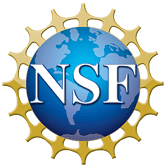CESM2 83-level simulations
To Access Resource:
Questions? Email Resource Support Contact:
-
Teagan King
tking@ucar.edu
UCAR/NCAR - Research Data Archive
Temporal Range
-
Begin: 1850-01 End: 2100-12
| Resource Type | dataset |
|---|---|
| Temporal Range Begin | 1850-01 |
| Temporal Range End | 2100-12 |
| Temporal Resolution | N/A |
| Bounding Box North Lat | N/A |
| Bounding Box South Lat | N/A |
| Bounding Box West Long | N/A |
| Bounding Box East Long | N/A |
| Spatial Representation | N/A |
| Spatial Resolution | N/A |
| Related Links |
Related Resource #1 : CVCWG website with simulation details |
| Additional Information | N/A |
| Resource Format |
HDF5/NetCDF4 |
| Standardized Resource Format |
NetCDF |
| Asset Size |
0.00 MB |
| Legal Constraints |
Creative Commons Attribution 4.0 International License |
| Access Constraints |
None |
| Software Implementation Language | N/A |
| Resource Support Name | Teagan King |
|---|---|
| Resource Support Email | tking@ucar.edu |
| Resource Support Organization | UCAR/NCAR - Research Data Archive |
| Distributor |
NCAR Research Data Archive |
| Metadata Contact Name | N/A |
| Metadata Contact Email | rdahelp@ucar.edu |
| Metadata Contact Organization | NCAR Research Data Archive |
| Author |
Simpson, Isla Rosenbloom, Nan |
|---|---|
| Publisher |
Research Data Archive at the National Center for Atmospheric Research, Computational and Information Systems Laboratory |
| Publication Date | 2024-06-03 |
| Digital Object Identifier (DOI) | https://doi.org/10.5065/S125-CA92 |
| Alternate Identifier |
d651002 |
| Resource Version | N/A |
| Topic Category |
climatologyMeteorologyAtmosphere |
| Progress | completed |
| Metadata Date | 2024-08-04T02:10:00Z |
| Metadata Record Identifier | edu.ucar.rda::d651002 |
| Metadata Language | eng; USA |
| Suggested Citation | Simpson, Isla, Rosenbloom, Nan. (2024). CESM2 83-level simulations. Research Data Archive at the National Center for Atmospheric Research, Computational and Information Systems Laboratory. https://doi.org/10.5065/S125-CA92. Accessed 02 April 2025. |
Harvest Source
- ISO-19139 ISO-19139 Metadata

